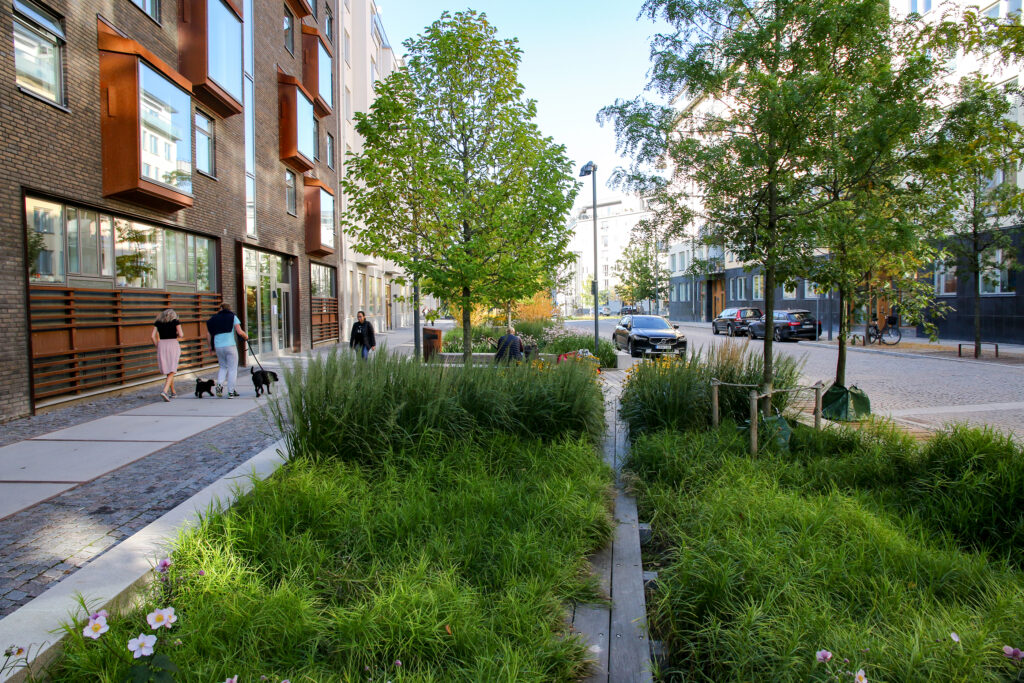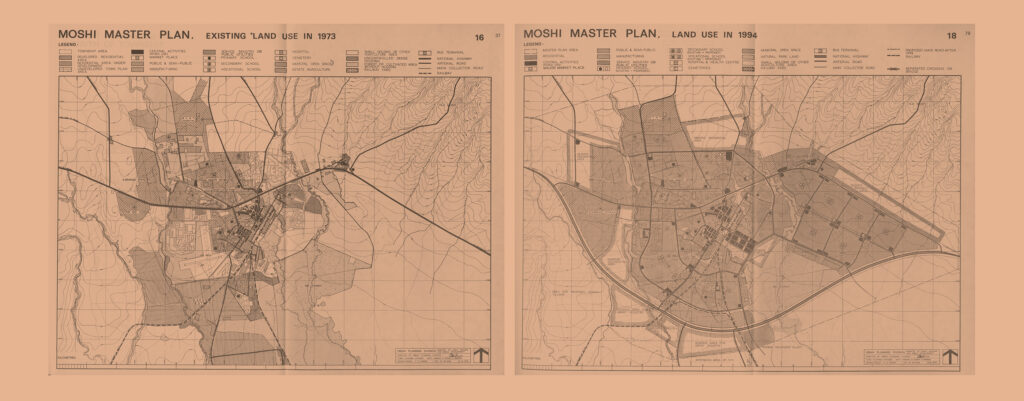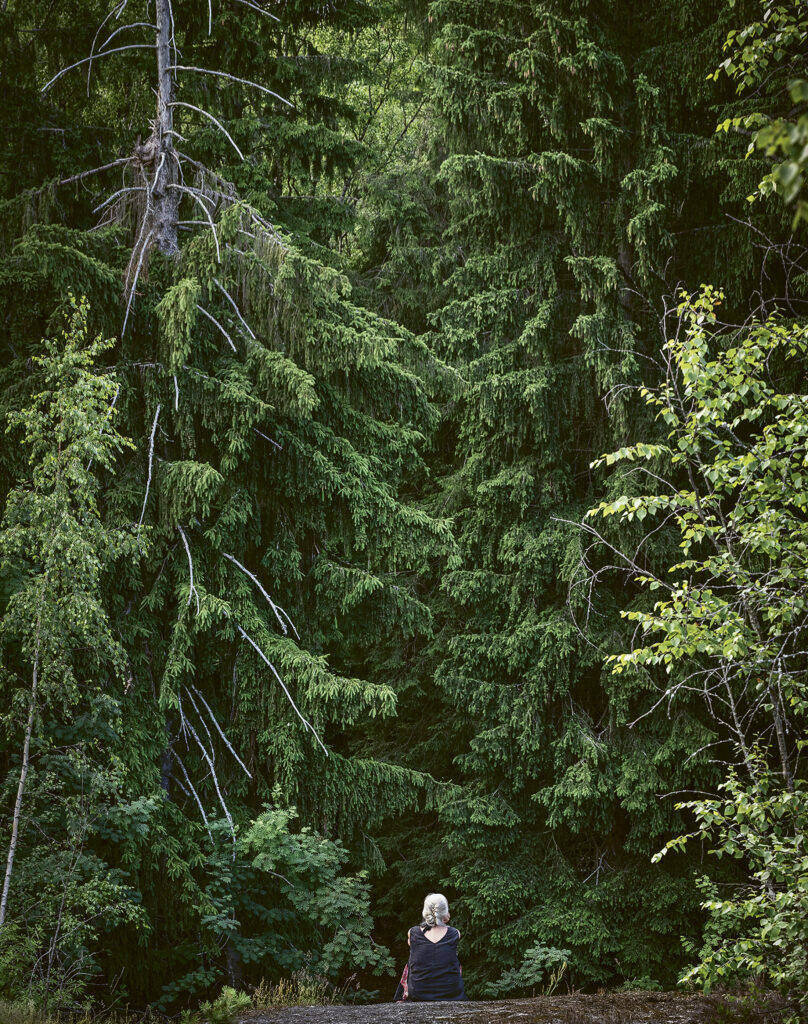Arenas of Urban Development

Helsinki, Turku and Oulu are planning to build event arenas in central locations. In Tampere, an arena built above the railway has been in use for a good two years. What kind of cityscape is being constructed along these megaprojects?
Over the last few decades, Finland has seen the promotion of several urban development projects of exceptional magnitude. Supersizing has led to projects that are not only larger in built floor area but also involve processes and outcomes that have tested the ability of cities and their residents to steer the formation of the shared environment. Enmeshed in the public debate around the arenas have been political views, economic interests and questions related to the cityscape and architecture.
Projects that are centred around the construction of a multipurpose arena have played a significant role in the development plans of the largest cities in Finland. The cities have been able to further the construction of needed sports and event venues by opening up opportunities for the private sector to participate in the planning and implementation of challenging wholes. The Nokia Arena in Tampere is the first such project to have been completed, while Garden Helsinki awaits the building permit process, the Turun Ratapiha project in Turku has already proceeded to an approved detailed plan, and the development for the Oulu Arena for Events and Experiences is in its initial stages. Now is the time to examine the plans of these cities and to evaluate the impact of the arenas on the surrounding urban environment before they are inserted into the cityscapes of our city centres.
Supersizing has led to projects have tested the ability of cities and their residents to steer the formation of the shared environment.
All of the projects have entailed a long and eventful preparation, which is typical of urban planning, in addition to being subjected to the uncertainties brought along by changing circumstances. They are also similar in size: Nokia Arena seats 17,000 and Garden Helsinki 19,000 concert spectators. The arenas in Turku and Oulu are slightly smaller, with 10,000 and 13,000 seats, respectively.
The arenas are examples of large hybrid projects in which combinations of various functions increase the profitability of the project but also make the planning process more challenging. Despite the similarities, each project has its own special characteristics when it comes to the process, context and plan, and these traits are highly illuminating precisely from the points of view of the cityscape and the urban fabric. What type of a city is being built under the cover of the arenas, and how is this achieved?
Helsinki
Garden Helsinki
B&M Architects, PES-Architects
149 000 m2
11 000–16 000 spectators
600–800 M€
Garden Helsinki has been promoted publicly since 2008, when the HIFK sports club proposed the construction of a new arena, but the first plans for a major development project built around the arena were not presented until late 2012, designed by PES-Architects. The targeted scale of the project was also made clear at this time: the whole was to include tens of thousands of square metres dedicated to other functions besides sports or exercise. This was to ensure the feasibility of the project and, naturally, maximize the profitability.
The early phases of the project were characterized by opportunistic experimentation in terms of both location and scope – the first suggestion was to erect the complex in Mäntymäki between the Olympic Stadium and Töölönlahti Bay, and a couple of years later, the planners zoomed in on a site next to the Helsinki Ice Hall behind the Olympic Stadium. The scope of housing to be built in connection with the arena has also fluctuated. The project has relied on the profitability of housing construction, and significant amounts of development rights reserved for new residential areas in other parts of the city were attached to the arena project – a decision which the City justified by citing the need to ensure the economic feasibility of the project.
The current site and planning solution are based on an architectural competition held in 2016, and the project has been developed further on the basis of the winning entry, “Skrinnari”. The winning firm, B&M Architects, has since partnered with PES-Architects, which is in charge of the underground facilities.




The Garden Helsinki plan is characterized by a very distinct shape: a triangular block with rounded corners wraps around the new arena. The aboveground section combines a hotel, offices and housing, while the arena itself will be located underground. The other exercise and sports facilities are to be allocated to the old Ice Hall (Jaakko Kontio and Kalle Räike 1966). As regards the urban fabric and cityscape, Garden Helsinki is set apart from the other ongoing arena projects in that it has been allocated a site in the Eläintarha Sports Park, the character of which is currently defined by free-standing sports buildings positioned loosely in an open, valley-like landscape.
The Garden arena would bring about a drastic change to its surroundings, forming a large volume along the Nordenskiöldikatu street that would not be in line with the existing fabric or functions of the area. In addition, a multistorey parking facility with 45,000 m2 of parking, practice rinks and other functions would be blasted into the neighbouring rock. The exits and building service shafts for the cave would ascend straight through the rock into the park.1
At the time of writing, however, the implementation of the project is looking uncertain due to high costs and technical challenges. In the latest City Board decision extending the planning reservation, the Board calls for the opening of the project funding and waives the sale of development rights from outside the planning area.2 However, even with the significant changes to the political and financial equation, the public statements by the company Projekti GH Oy promoting the project remain optimistic. The detailed plan for the area has now been ratified and the next step is the submission of the building permit application. The coming two years, while the planning reservation is in force, can be considered as a crucial stress test that will determine the fate of the project.
Turku
Turun Ratapiha
PES-Architects
160 000 m2
9 000–10 000 spectators
400 M€ without housing
The development of the Turku railway yard was launched in 2017 with an agreement between the City of Turku and private developer group TRK Oy. Like Garden Helsinki, the new multipurpose arena only constitutes one part of a larger development. The majority of the gross floor area will consist of housing, commercial premises and a hotel. The objective is to develop the railway yard area into a whole that invigorates the entire city.
The area’s development plan leans on an architectural competition held in 2018 in search of an overall solution for the area. The brief was also to create a seamless connection with the surrounding urban fabric, as the scope of the project corresponds to that of a small city district, and the development will expand the city centre, introducing a new perimeter for the inner city. The railway tracks will continue to separate the new development from the heart of the city, which means that the connection to the city centre’s bloodstream will have to rely on a bridge. The project is a grand component of the city centre development plans resolutely advanced by the City of Turku. These plans also include the nearby Aninkainen area and a new travel centre.



1st floor, as drafted for the town plan. Drawing: PES-Architects
The winning competition entry, “Luoto” by PES-Architects, highlights the arena building as a prominent landmark. Hotel and office functions have been allocated in connection with the arena itself, but more than half of the gross floor area is situated apart from the arena building. Housing construction is concentrated in tower blocks along the Köydenpunojankatu street, as well as on the south-west corner of the area. In addition, an experience centre is planned in connection with the neighbouring Logomo event venue and a narrow row of office buildings to the south-east of the tracks, giving the area a new facade towards the city centre. The old engine house will remain hidden between the new buildings and form the heart of the new block.
The whole marries sculpturesque architecture with a pragmatic separation of functions that is bound to improve the feasibility of the project. As regards the cityscape, the plan offers varied public outdoor spaces to its visitors, but the rooftop terraces that were prominently featured in the competition entry raise some questions; their design and implementation are demanding, and they are also challenging in terms of accessibility and usability. The narrow bridge connecting the streets bordering the planning area, Köydenpunojankatu and Ratapihankatu, will be transformed into a more multi-form connection: only a short section of the actual bridge will remain intact and cross over the tracks, while the main part of the connection will run in front of the arena as a deck structure. The most central urban space between the arena and the engine house will be built on two levels. The Pohjolankansi deck will serve as a base for the arena and will be level with the bridge, while the spaces positioned at ground level below the deck will open out towards the Veturitallinaukio square and the old engine house.
Since the competition phase, several aspects of the plans have been developed further, but all of the basic solutions introduced in the competition entry are still included in the ratified detailed plan. As the project proceeds towards implementation, we can only hope that more attention will be paid to the architectural visage of the arena itself. The restlessness and lack of cohesion in the facades that was already mentioned in the competition’s jury report continues to plague the current plans. The horizontally striped facades make the building into a distinct, single body, but the general effect is restless when it comes to both the greater landscape and the environment on ground level. As regards the residential buildings, the plan has never appeared to be particularly ambitious. The 8–20-storey tower blocks are presented as bevelled deep volumes, representing the current housing development practices that are geared towards guaranteeing the key aspect of a high floor area ratio.
Oulu
Event and experience arena
Oulu
Kontukoski Architects
50 000 m2
10 000–13 000 spectators
130 M€
The plans for the event and experience arena in Oulu also place the building by the railway, to the east of the tracks. In the initial plans, the plot of the former police station and courthouse has been allocated for this purpose. However, the project has been notably more contained than in Turku, for example. The arena is a single building positioned as a continuation of the already planned travel centre, and, together, the two form a series of buildings that extends the city centre across the railway. In the project plan drawn up by Kontukoski Architects in 2022, the floor area allocated to the arena constitutes more than half of the overall scope of the project, which also includes office and commercial premises as well as a 200-room hotel. This emphasis also sets the project apart from the other current arena projects, in which the high-yield housing, business and accommodation functions eat up the majority of the planned floor area.
A draft plan has been drawn up for the area, based on a design competition for the travel centre that was settled in 2017. In the winning entry by Lahdelma & Mahlamäki Architects, the area consists of densely-built residential blocks and a hybrid travel centre building that combines various functions. There is no detailed plan in effect for the arena plot, but preparatory measures have been taken. The former police station and courthouse building has been demolished, and the City is committed to the further development of the project.



Despite the design competition and planning process, the implementation of the travel centre according to plan is now looking unlikely, and the role of the arena as part of the whole seems to have changed. The City has acquired the land allocated for the travel centre and will recommence planning for the area through a competitive tendering process with the objective of seeking new solutions and implementers. The planning brief is now centred around the arena, and the aim is to provide developers with the opportunity to propose a combination of functions that would enable the economically feasible implementation of the arena, as well as other new construction, by the railway.
The future of the surroundings of Oulu railway station is, once again, up in the air, but it would not be a huge leap to assume that the new plans will probably be in line with the corresponding projects in other cities and that the floor area dedicated to sports will fade to a minority as various more profitable functions are maximized and take the lead. One can only hope that the proposed new development will not only enable the construction of the arena but also facilitate the creation of a high-quality urban environment at one of the most central locations in Oulu.
Tampere
Nokia Arena
Tampere
ARCO Architecture, Studio Libeskind
125 900 m2
13 000–15 000 spectators
340 M€
Tampere’s Nokia Arena can be regarded as a pioneer project or pacesetter of sorts for the ongoing arena projects, and it is mentioned whenever anyone writes about the Tampere pull factor. The planning and construction of the arena has been a great feat for all parties involved, the operations have brought more people and revenue to the city centre, and the arena, as well as other current city development projects, have given Tampere a clear lead in the race between Finnish cities when it comes to a comparison of vibrant city centres.
Preparations for Tampere’s arena project began all the way back in 2008. The arena was taken into use in late 2021, but only half of the tower blocks included in the plans have been constructed to date. The overall composition comes from the pen of Studio Libeskind, with Aihio Architects, currently part of the Arco Architecture Company, as their local design partner. In the plan, towering buildings with diagonal roofs stand in a rising spiral formation that circles around the central arena building and culminate in the yet-to-be-constructed main tower.


Nokia Arena. Drawing: ARCO Architecture & Nokia Arena
The concept is a faithful reiteration of the principles and forms of Libeskind’s entry, “Memory Foundations”, to the competition for the World Trade Center site plan in 2003. But in Tampere, centre stage is given to the arena instead of a memorial for the fallen twin towers. The new towers are also clearly recognizable in terms of their geometry and outward appearance: the bevelling and the seemingly random diagonals in the facades could just as well be found in Libeskind’s works in Dusseldorf, Hong Kong or Seoul. Studio Libeskind is naturally going to produce designs that are on brand, but one might also ask about the role that the site and adapting to it play in a project such as this.
On the other hand, in the exterior architecture of the arena itself, the themes often repeated in Studio Libeskind’s designs, such as the experimentation with metal and perforated materials and coiling facade surfaces, have found their natural place. Nokia Arena forms an intriguing and dynamic shape in the greater landscape, and the surfaces also offer small-scale detailing when viewed from the base of the building.
Arenas as Part of the Cityscape and the City
The arena plans that are currently in different phases of development and the already completed Nokia Arena open up a window for evaluating the projects from the perspectives of urban planning and development. The Tampere example is quite illuminating when it comes to the cityscape. Building above the railway tracks has made it possible to insert an enormous project at the very heart of the city – the arena is easily accessible, and the events held there add to the flows of people in the city centre. The central location and the visually open zone formed by the railway accentuate the challenges associated with projects of this magnitude when it comes to the cityscape. The sheer scale of Nokia Arena and the adjoining buildings form an island set off from the surrounding urban environment and introduce a new silhouette that now defines the skyline of the entire city: when arriving at the railway station, a visitor is immediately struck by this new layer in the cityscape. In the case of Garden Helsinki and the historic Olympic Stadium, one cannot help but ponder whether there is a risk of a similar impression, considering the valuable environment of Helsinki’s Central Park.
For purely economic reasons, arena projects typically include a large volume of other types of construction besides the arena itself, and when viewed through the lens of the cityscape, the ongoing plans examined here – or the implemented example in Tampere – have yet to provide a satisfying blueprint for resolving the issue. As regards the Garden Helsinki project, incorporating the new development into a single form has led to challenges that have to do with the cityscape, in addition to placing the very feasibility of the project in question. In Turku, the arena plans come with several city blocks’ worth of gross floor area dedicated to rather unambitious strings of tower buildings.
For the sake of the central locations of these projects, the plans should be well-resolved and of a high quality through and through.
Managing the whole is challenging at such a grand scale, but for the sake of the central locations of these projects, the plans should be well-resolved and of a high quality through and through. The Oulu Arena for Events and Experiences was originally conceived as its own separate development project, but the scope will now expand and the proposals need to balance the demands of the arena with those of the overall urban environment.
In light of these challenges, it is quite revealing that the most promising and workable solution for hybrid development and the combining of a sports venue and housing is offered in the Tammela Stadium designed by JKMM Architects in 2024, also in Tampere. In relation to the cityscape and urban fabric, the design reflects the features of the site: the football stadium is bordered by multistorey housing that is in proportion with the surrounding buildings. As a project of significantly smaller scale, Tammela Stadium gives a clear signal as to the scope of development that can be successfully reconciled with the central fabric of our cities. By heeding this message, we can avoid the type of flip in the relationship between a city and urban development projects where the tail ends up shaking the dog. ↙
TOMMY LINDGREN
is an architect, and works as a lecturer in urban design at Aalto University. As a designer, writer and researcher he is focused on cities and the processes of building.
1 The section on Garden Helsinki is partially based on the piece written by the author of this article for the Kenen kaupunki? pamphlet. Harri Hautajärvi et al. (eds.): Kenen kaupunki? Helsingin kaupunkisuunnittelu ja kulttuuriympäristö törmäyskurssilla. Docomomo Suomi-Finland 2021.
2 The shift in the City’s policy is likely partially explained by the change of mayor in 2021. Former Mayor Jan Vapaavuori had a very favourable view of the project and has continued to support it both as President of the Finnish Olympic Committee and, starting in 2023, as a board member of the company supporting the Garden Helsinki real-estate project.




